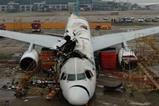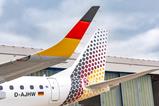Airbus might have sidestepped the quicksand of regulatory and media scrutiny in which rival Boeing has found itself immersed since the year began, but the airframer is facing its own set of pressures as it balances pushing future boundaries against the need to address present-day supply problems.
Meanwhile in its defence business, the company is engaged in one of its most ambitious co-development projects to date, but one that has so far generated its fair share of tensions with the programme’s other main partner.

On the commercial side, chief executive Guillaume Faury wants Airbus to pioneer a hydrogen-powered airliner but the company is still battling to restore pre-pandemic build rates for its current aircraft lines, and has been forced again to defer its 75-per-month target date for A320neo-family production.
“We are disappointed,” Faury tells FlightGlobal. “I am disappointed that we had to smooth the ramp-up trajectory.”
Airbus’s original plan, detailed two years ago, would have resulted in its achieving a 65-per-month rate last summer, and 75 next year. But last year’s 571 A320neo-family deliveries, and the 261 to June this year, suggest a production rate languishing in the 40-50 zone.
Faury says the demand for 75 is unquestionable. “[We’re] just facing the reality that the supply eco-system, the supply chain environment, is far less stable than what we anticipated when we designed the ramp-up,” he says. “And far less stable than it used to be before [the pandemic]. And it has not yet recovered the stability, the predictability.”
The 75-per-month target, originally 2025, has been put back to 2027.
“It comes as a significant disappointment at my end that we have to face that reality and orchestrate a ramp up that goes slower than what we think we’d need,” says Faury.
“We are slowing down – not because of the Airbus capabilities. We’re slowing down because we have so many challenges in the supply chain. And that’s not going away.”
He says Airbus is dealing with a “large diversity” of risks, from short-term issues such as the industrial manufacturing snags affecting engines, to longer-term matters such as titanium sourcing as it tries to wean itself off Russian metals giant VSMPO and rely on other suppliers.
“There is a bigger equation to solve, on what the future will look like in terms of supply for critical raw materials, and for Airbus,” says Faury. “For aviation, titanium is probably the most important one. So, we’re also thinking and working on future supply chains, new suppliers.”
While he suggests companies such as Rio Tinto are seeking to become large players in the sector, the transition to reliable, high-quality alternatives is not a quick fix.
SPIRIT SHIFT
Airbus’s largest supply-chain upheaval, at least in the near term, has been the unexpected decision by Boeing to re-acquire beleaguered US firm Spirit AeroSystems, two decades after spinning off the aerostructures facilities from which Spirit subsequently emerged.

While 64% of Spirit’s revenue derives from Boeing, Airbus is its second-largest customer, contributing another 19%. Spirit manufacturers the A350 central fuselage in North Carolina, as well as A220 wings in Northern Ireland and A220 fuselage sections in Morocco.
“We’ve been surprised. We were not expecting Boeing acquiring Spirit until they announced it,” says Faury, speaking ahead of the deal’s confirmation, adding that Airbus has had to respond to retain direct control of relevant work packages.
“We don’t want things, parts, components to come from Boeing. And I’m not sure Boeing wants to supply directly Airbus critical parts.”
Airbus’s integration of the Spirit work, while unexpected, is “not in contradiction with our main core strategy”, says Faury. The airframer has already brought aerostructures operations in France, Germany and other international sites closer to its core, consolidating them under the Airbus Atlantic and Airbus Aerostructures banners.
But Faury also points out that Airbus is not looking to pursue deep vertical integration. “We’re not in a situation to go from ‘buy’ to ‘make’ everywhere,” he says. “There’s no decision to verticalise the whole supply chain – it doesn’t make sense.”
Airbus will acquire the Spirit A350 work just as the airframer is looking to hike production on the type to its highest monthly rate, 12 aircraft, over the next four years – supply chain permitting. By this point the A350 line should be complemented by the freighter variant, which has been steadily supplementing the twinjet’s backlog.
Production of the A330neo remains low in comparison, at four per month, the backlog having been slashed in the past two years by cancellation of large AirAsia and Iran Air orders, but Faury insists demand is strong and the airframer is not “missing orders” for the type.
“The [A330neo] is, to some extent, benefiting from the lack of supply on the single aisle,” he claims, highlighting a “bit of potential crossover” between the A321neo variants and such widebodies as the A330neo and Boeing 787. “I’m not in a situation where we are lacking orders on A330neo, it’s not the case.”
FUTURE AIRCRAFT
Airbus’s ambitions to shape future aircraft design and propulsion remain intact, although Faury indicates that the airframer is taking a conservative approach regarding the hydrogen-powered ZEROe aircraft proposals it unveiled nearly four years ago.
“One of the challenges at the launch of the programme is to understand what the hydrogen ecosystem will look like when we enter the product into service,” he says. “And what we see coming is that… hydrogen, as a source of energy for aviation, will not be deployed around the world at the same pace.
“We see that there will be some regions, some airports, some countries or some blocs like Europe that might be ready where others are not.”
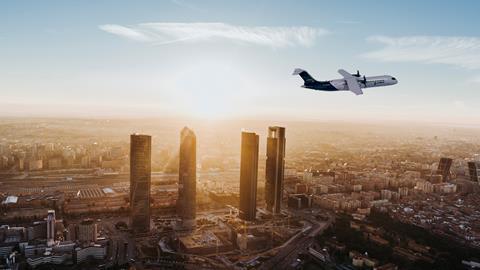
He says this will limit initial networks, with flights only able to operate routes where hydrogen supplies are available at origin and destination.
While the developments will “probably mushroom”, he says, the evolution calls for a “more regional or lower-end” aircraft in terms of early market positioning.
“Depending on the technologies we select – and we’re starting to have a better understanding of what we’ll be selecting – there’s a scale effect that is favourable to smaller aircraft,” Faury adds.
Novel hydrogen-fuelled designs will carry financial risks, he points out, and a smaller aircraft entails lower exposure.
“We have a number of factors that speak for around 100 passengers around 1,000nm [1,850km] sizing,” he adds. “I’m not suggesting that’s exactly where the product will be. But we see that it’s the space that starts to really make sense for these different criteria.”
Airbus has already run an experimental 1.2MW powertrain, compatible with a six-engined 100-seat aircraft, but is working on a 2MW version, through its Cryoprop initiative, with hydrogen-driven electric fuel-cell architecture assisted by superconducting technology.
That does not mean the higher-capacity, longer-range concepts using hydrogen combustion are being ignored. Airbus is plotting the successor to its ubiquitous A320neo family, for service entry in the second half of the next decade.
And while Faury says it will initially “not be a hydrogen [aircraft]”, but conventionally-powered by 100% sustainable aviation fuel, he signals that the design would be sufficiently flexible to adapt to hydrogen propulsion. He points out that CFM International’s RISE open-fan engine programme will be “fuel agnostic”.
“As we’re looking at that [successor] as a platform that we leave for maybe 30 years, it has to be capable of [using] hydrogen coming at a later stage,” he states. “So that’s the thinking.”
DEFENCE CHALLENGE
In the defence business, arguably the programme with the highest profile is the Future Combat Air System being developed for France, Germany and Spain.
But while the effort has gathered in the headlines in the past, these have not always been for the right reasons. Indeed, the run up to the signature of the Phase 1B contract to develop a demonstrator for the manned New Generation Fighter was largely marked by very public wrangling over workshare between Airbus and Dassault Aviation.
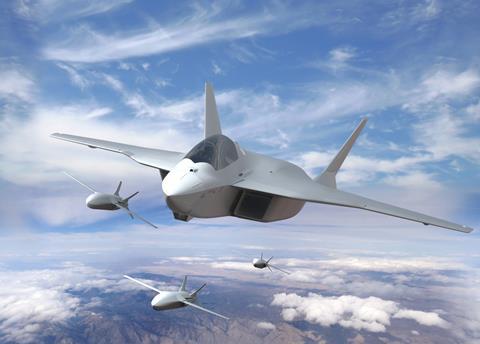
While a schism at this early stage did not seem entirely likely, albeit not impossible, the fractiousness did not augur well for a strong working relationship in the future.
Faury believes that “one of the most difficult phases of the programme” was securing the Phase 1B agreement on workshare, given the need to balance the interests of the companies involved and “for the states that pay the bills, who put the money on the table”.
Reaching that point was not made easier, he says, as “the partners in the programme are today’s competitors” – Dassault’s Rafale and the Eurofighter Typhoon in which Airbus is a partner frequently go head to head in sales campaigns – and “obviously this competitive dimension is not an easy one to deal with.”
But with the Phase 1B contract signed in December 2022 and the programme moving to the “execution phase”, the pair’s relationship seems much more cordial. Even Dassault’s notoriously outspoken chief executive Eric Trappier recently declared that the work with its partner was “going well”.
“I think it is logical that it is much easier and much calmer phase when we are executing what we have agreed in 2022,” Faury adds.
There will need to be further negotiations as the FCAS project moves to Phase 2 and the construction of the NGF demonstrator. Although Faury thinks these will be “much easier discussions” than seen previously, aided by the experience of working together on Phase 1B, there may still be some challenges.
“They will probably come when we are discussing Phase 2 and they will probably come on an even bigger scale when it’s about launching the programme, when the states will have to fund the programme, and with the potential opportunity at that moment to bring external funding through the participation of other states and therefore potentially other industrial partners,” he says.
One of Dassault’s major concerns prior to the signature of Phase 1B related to the dilution of its workshare through the admission of Spain to what was previously a Franco-German project – a situation made more complex by the fact that for the NGF element Airbus represents both Berlin and Madrid.
Bearing that in mind, it begs the question of how many more partners the FCAS grouping could accommodate.
Faury points out that FCAS is more than just a single aircraft, also comprising a new engine, sensors, combat cloud, remote carriers, and weapons. “It’s a very broad programme and depending on how you [construct] the programme you can even onboard more players,” he says, noting that the Eurofighter consortium represents four countries, and the A400M six (seven if you also include Luxembourg).
“From my perspective, at the launch of the programme, if we want it to be at the level of ambition and scale that is required to be successful there will be such a need for funding that there will be other participants welcome into the programme,” he says.
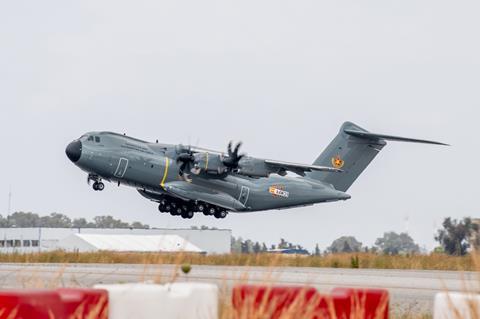
However, during the current technology development phase “I think we have to be stable on the workshare, on the participants for the time being”, Faury adds. All of which means that although Belgium now has observer status on the programme and a path to eventual full membership, the incorporation of the nation’s industry at this stage is not foreseen.
The focus on FCAS – and the need for its success – is partly driven by Russia’s invasion of Ukraine and the desire for strategic autonomy that comes from not simply buying American. However, such lofty ambitions often founder when faced with harsh budget realities.
Although Faury believes Europe’s understanding of the need for strategic autonomy is “here to stay”, he also sees that nations will be forced to take a twin-track approach: “I think facing the reality of budgets and what it means in terms of developing our own capabilities is also something that will have to be recognised.
“Will we move away completely from procuring from the US? The answer is no; Europe will never have the scale of investment in defence and security that the US has today,” he says.
But both approaches are “complementary”, he argues, ultimately bringing more capabilities to the NATO alliance, regardless of whether these home-grown or bought-in.
A400M PROSPECTS
Even where European countries have collaborated to “create scale” and successfully launched programmes, their wider success hinges on the ability to secure export commitments. That is especially true of the A400M, where to date just three export customers – Indonesia, Kazakhstan and Malaysia – have signed for a total of eight aircraft.
The failure to secure additional volumes beyond 179 booked so far has seen the undelivered backlog shrink to 51 units, Cirium fleets data records. In 2023, Airbus handed over eight aircraft, the year before that, 10; if those volumes are maintained, production will barely extend to 2030.
Faury says Airbus has “prospects” for additional A400M export deals, alongside discussions with the partner nations on “how many more they would potentially need in the future”. But to be able to fulfil those orders “what matters for me is to make sure we have stability in the programme”.
Discussions continue with the partner countries around the future production rate: “on what it should look like for us and for them”, says Faury. He declines to detail the planned output, noting: “We will be able to answer that question later in the year.”
There is, he says, a balance to be stuck between the financial capabilities of its customers and what Airbus requires to keep the programme alive. “If we manage to find an equation that works for several years to come, it gives us more time and more opportunities to capture export contracts and to keep the ball rolling by having this ongoing production.”
HELICOPTER HOPES
But if Airbus wanted a sign that a programme’s fortunes can flip, it could do worse than look to the H225 heavy-twin produced by its helicopter division. Battered by the dual crises of a deep oil and gas market downturn and a grounding in the wake of a fatal crash caused by a gearbox failure, you could have been forgiven for writing off the Super Puma’s sales prospects. But the programme has bounced back: around 100 units have been delivered over the last five years and the H225 recently secured a huge 38-aircraft order from Germany’s Federal Police.
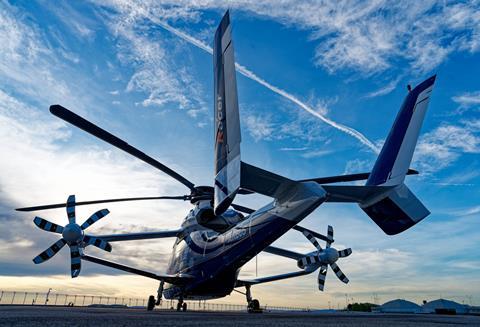
Despite being a hard-nosed business chief these days, Faury was formerly the chief engineer on the H225 programme and will no doubt derive a certain personal satisfaction from the helicopter’s return, beyond the billions of euros in revenue such sales represent.
He praises the work undertaken by Airbus Helicopters to “take what was outstanding in the H225 and to enhance what needed to be improved and what needed to be resolved”, he says.
“I think that today’s H225 is an outstanding product with huge capabilities that has the potential to continue to operate for many years,” he says. “And I’m happy that the oil and gas [sector] is looking at this product again.
“But we need to remain humble and continue to challenge ourselves because missions operated by these products are very challenging, so it is a never-ending situation.”
If the roadmap for future products is relatively clear in commercial aviation, the same is not necessarily true for the helicopter business. Airbus Helicopters has four different demonstrators flying, testing a plethora of technologies including advanced sensors, hybrid power, and a high-speed architecture. But which, if any, of those technologies will make it to production has yet to be determined.
Faury says part of the difficulty in deciding is the “fragmentation” of the industry, and the “diversity of missions and the diversity of customers” where a single platform like the H145 light-twin could perform missions as divergent as VIP transport and light attack.
“That’s what we intend to keep doing, so we think helicopters will have to continue to be very versatile,” he says. The “need for sustainably, for decarbonisation, will continue to accelerate”, Faury adds, with autonomy “also playing a role”.
Faury has been chief executive of Airbus since 2019 with his current contract running until 2025. During that time, he has navigated an existential crisis for the industry and continues to battle its after-effects, while also attempting to mitigate the sector’s environmental impact. Given all that, does he really want another three years - or more - in the hot-seat?
“I have a passion for what I am doing and as long as the [Airbus] board wants to rely on me I’m here to serve and I’m happy to do it,” he says.
While reaching 2030 might be a stretch – “I don’t know, I’ll be more than 60” – Faury says he still relishes the challenge. “My next mandate is for renewal next year and I’m obviously willing and applying to keep working in this company in that role beyond 2025 for sure.
“I’m not the one to decide who is running the company, I’m the one trying to do the job day in and day out. I do my very best in the role and I’m very much looking forward to doing it as long as it makes sense for the company.”
Additional reporting by Dominic Perry in London























